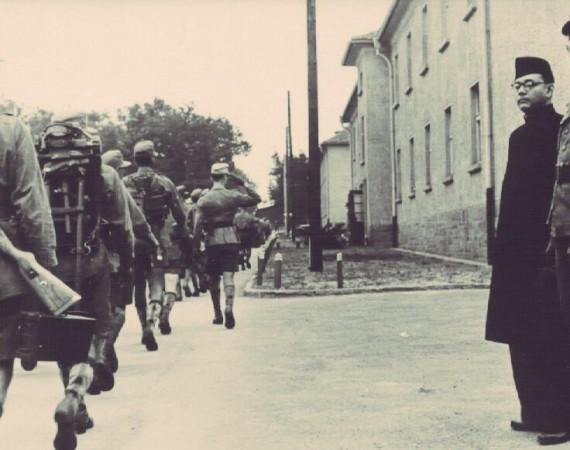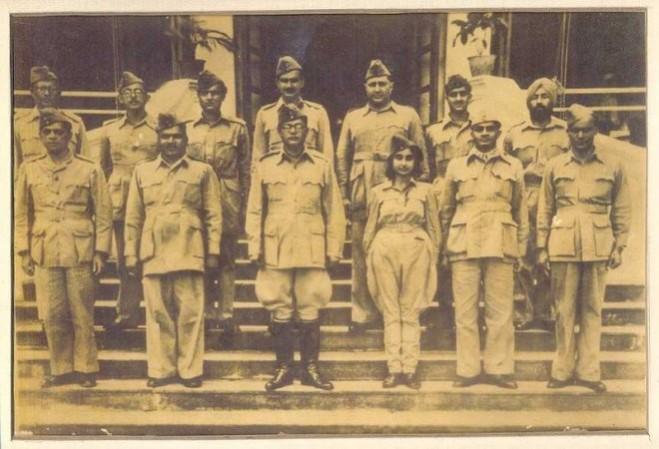On this day in 1945, an overloaded Japanese army plane crashed in present Taiwan while carrying Netaji Subhas Chandra Bose. It was still not believed as many believe that Netaji survived the crash and escaped.
However, archives show that on 18th August 1945, Netaji was hurriedly put on a miliatry bomber that took off from Taipei (Taiwan) enroute to Tokyo (officially) and Manchuria (unofficially) at around 2:30 PM.
At about 20 metres above the ground, "one petal of the propeller of the left wing was suddenly broken, and the engine fell off" said a Japanese document. The plane crashed on the ground, engulfing the occupants in flames, including Netaji, who was sitting just above the oil tanker, said documents made public by the Japanese archives recently.

Netaji was rushed to the Nanmon Branch of Taipei Army Hospital by his aide Col. Habibur Rehman of Indian National Army (Azad Hind Fauz) with third-degree burns. An Army medical officer, Capt. Taneyoshi Yoshimi, Japanese doctor Toyoshi Tsuruta and a Taiwanese nurse Tsan Pi Sha were the eye witnesses to his death in the hospital.
Since the Japanese army did not enter his name but referred him as Mr T in its recrods, enough confusion ensued with his family members rejecting the death news. Another controversy is over his death time that was recorded as 7 pm in Japanese documents while the doctor who attended on him said he died around 11 pm after going into coma.

Otherwise, on August 22, 1945, Netaji was cremated at the Taipei Municipal crematorium, confirmed the Japanese documents and the records given to the local crematorium had the name of Ichiro Okura, not Mr T, nor Netaji's full name, leading to another row over Netaji's death.
But further probe by the Shah Nawaz Committee into the place where Netaji was cremated shows that it was the body of a tall and bulky Indian which was not fitting in the furnace meant for locals. A sure indication that it was not of a Japanese national but of Indian. Owing to military protocol and surrender of Japan just two days before the event made the military personnel to hide the real identity of their wartime friend.
When Hiren Shah, a journalist with Mumbai's Free Press Journal, visited Taipei in September 1946 to probe the accident, the nurse, Tsan Pi Sha, showed him the ward, the bed and said:
"He died here. I was by his side..... He died on 18 August last year (1945), (Subhas) Chandra Bose... I am a surgical nurse and took care of him till he died.....I was instructed to apply olive oil all over his body and that I did...Whenever he regained briefly his consciousness, he felt thirsty. With slight groaning, he would ask for water. I gave him water several times."

When Shah asked her "So you definitely know that he is dead?", she replied, according to Shah, with a tone of rebuke: "Yes, he died. I have told everything about it. I can prove that he died."
However, Bose's family members refused to accept the plane crash theory and demanded to conduct DNA testing, which is not possible as the body was burnt, not buried in Taiwanese crematorium and the burnt bones could not help in determining the DNA.
Even Subhash Chandra Bose's daughter from Germany, Prof. Anita Pfaff has eventually agreed to the death version of Netaji and sought the Indian government to transfer her father's ashes from Renkoji temple in Tokyo to India.
But to this day, on Aug 18 every year, the priests of Rankoji temple bring out his remains and perform rituals in the hope that one day his ashes will be taken home. Perhaps, it's time to bring home the ashes of India's most iconic leader.














